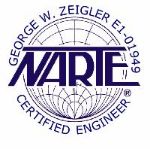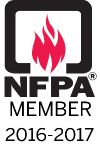How to Maintain Communication Equipment Continuity in an Emergency Management Agency
When an emergency occurs locally it is necessary that all essential equipment within an emergency facility such as an EMA/9-1-1 facility be functioning properly and continue to remain online. The facility should have backup power systems in place to prevent the facility from operating due to a power outage, and it should have other protective means in place to prevent equipment loss. To complete this task and maintain public safety during emergency or non-emergency conditions requires proper planning, equipment selection, implementation, and training.
The public provides funding for EMA/9-1-1 facilities with the expectation that during any type of emergency or non-emergency conditions, that the EMA/9-1-1 will always be on line to communicate with the public. However, it is a well-known fact that across the United States that this is not always the case. Many times during emergency or non-emergency conditions, EMA/9-1-1 facilities have had equipment failures that prevented them from communicating with the public. Some of these equipment failures were unavoidable, but many failures could and should have been avoided.
Utility power failures, damaging power surges and lightning strikes are always going to occur. Preventing these power disturbances from causing equipment failures requires special planning and implementing the proper codes, standards, practices, and protective devices. Lightning at times can be the most damaging of any power disturbances it can cause equipment failures even while the utility power stays on. Lightning strikes as far away as nine miles in any direction can cause communication systems and electrical equipment to fail. Just because Ac power is still being supplied from the utility or your backup system does not mean that the electrical equipment in the facility has not failed from a power disturbance, power surge, or lightning strike.
The most common backup power systems are hard-wired emergency generators, portable emergency generators, Dc powered inverters and UPS systems. Of these three systems, the most reliable, and seldom used for EMA facilities, are Dc powered inverters. The most unreliable and frequently used system is usually the UPS system. The reason that the UPS system is the most unreliable is that the only method to test the UPS system is to lose power, then wait and see how long the UPS will actually say on line with the applied load. UPS batteries have a limited life cycle and until a real load is applied, no one actually knows how long that the UPS will supply the required load.
Backup power systems are only part of the equation to keep the continuity of the electrical equipment intact; it is vital that an electrical protection system be properly implemented as well. The facility’s electrical protection system is the most vital component that allows an EMA/9-1-1 facility to maintain electrical continuity, and equipment reliability. An electrical protection system usually has, but is not limited to, the following components: grounding conductors (Ac and Dc), ground bars (busses), ground field, lightning protection system, and surge protection devices (SPDs). All of these protective components keep the facility’s electrical system and equipment from experiencing outages or untimely replacement. Even if the EMA/9-1-1 facility has not had equipment failures, it is highly recommended that a complete electrical protection system evaluation be performed at least every three (3) years or whenever there is a major change in equipment or upgrades to the electrical system of the EMA/9-1-1 facility.
We have contacted every state governor within the United States regarding what common standards and practices for electrical facilities are in place for: powering; protecting, bonding and grounding of electronic equipment and cables in EMA/9-1-1 facilities. The response was not one single state has any required standards or practices for WMA/9-1-1facilities. Each EMA/9-1-1 facility is on their own as far as powering; protecting, bonding and grounding of electronic equipment and cables in EMA/9-1-1 facilities are concerned. The state governments uses the excuse that they cannot demand that EMA/9-1-1 use any protection standards or practices because of the Home Rule or Dillion Rule which gives local governments certain controls over what they can and cannot do by law.
Safety Protection Grid Solutions specializes in providing solutions for all types of facilities for maintaining the continuity of all electrical systems. We are recognized worldwide as subject matter experts for: power quality, lightning protection, equipment protection, equipment reliability, bonding, grounding, and complete facility footprint protection. Safety Protection Grid Solutions is committed to the prevention of electrical equipment failures and shock hazards in any facility. We have almost 70 years of experience in providing solutions for protecting telecommunications and other equipment in all types of facilities. We can write grounding standards for your EMA/9-1-1 facility, provide training to the EMA/9-1-1 team (bonding and grounding), provide electromagnetic interference (EMI) solutions, and are a provider of Surge Protection Devices (SPD) for all types and applications (Ac, Dc, Telco, Data, CCTV, CATV, GPS).
« Back to Blog






Comments